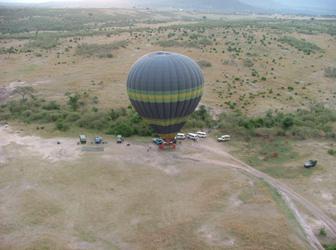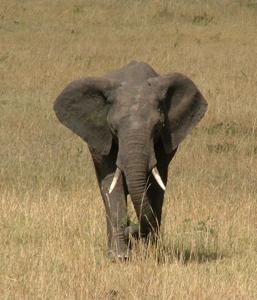|
The
Masai Mara
| The Masai Mara, or simply “the Mara”
as it is often referred, is a Park Reserve (not
a national park) located in the southwest corner
of Kenya. The park is about 320 square
km and has an ample water supply via the Mara River.
|
| The Maasai (the spelling of the name
for the people adds an “a”) are a nomadic people,
which are most notably known for their beadwork.
They are herdsman and use cattle as capital. They
are known for drinking a mix of cows
blood and milk and also for hunting lions by spear.
The lion hunt is a part of the passage from adolescent
into manhood for the young Maasai, or more accurately
from manhood to a status of warrior. Several Maasai
will take part in the hunt. The lion’s mane is then
used to make a ceremonial headdress. The picture
displayed here is three, Maasai warriors starting
a fire using two sticks. While some Maasai have
adapted to modern life many still live in their
traditional way. It is a fascinating
culture where the roles for the men and women
are very well defined. Both genders are circumcised
in a passage to adulthood ceremony at about the
age of 12. The women are responsible for hut building
and beadwork, while the men are primarily responsible
for taking care of the cattle and protecting the
tribe. |

|

|
The young Maasai men actually out
of the tribe and live off the land in small groups
for several years before they become warriors
as part of their passage to adulthood. Many of
them stay living in the bush and become wild.
The Maasai are also very well versed on the local
plants and have many uses for the plants found
throughout the region. The park itself is actually
an extension of the Serengeti
National park
in Tanzania and
is most famous for the Wildebeest migration. Sunrise on the Mara is extraordinarily beautiful.
The sky there at both dawn and dusk tends to take
on an unusual purple color. During my visit lightening
storms were common and particularly spectacular.
The lightening storms were of course followed
by rainbow, strewn skies.
One of the most common tourist activities on the
Mara is a champagne brunch/hot air balloon tour. The price is about
$385 (or was in 2004). It is a particularly exciting
way to view the wildlife,although
there is no guarantee that wildlife will be visible
from the air, and it was scarce when I went, but
still. worth the trip.
There is nothing quite like a champagne brunch
in the bush.
|
|
|

|
|
|

|
|
|
The hippo pools are at the very
southeastern end of the park. The trip to the
pools takes all day, and hippos with their young
are very prevalent as are crocodiles sunning themselves
along the banks. Herds of elephants are also a
common site on the Mara, as well as lone bulls
like the one above. There is not too much more
exciting then seeing an elephant crossing the
savannah against a purple dusky sky. Giraffes,
and zebra are also very common; the zebra migrate
with the wildebeest from the Serengeti in Tanzania.
|
|

|
|
|
Most spectacular are the wildebeest
and zebra seen in the thousands dotting the distance
slopes like ants, which have found a prime picnic
site. Small herds of galloping wildebeest scamper
across the plains, suckling
calves. Wildebeest carcasses and skeletons litter
the grasslands. The migration into the Mara starts
in late July and the animals return to Tanzania in
early to mid-September. The vast amounts of food
migrating into the park provide feasts for the
carnivores. While lion kills are a little difficult
to see in person, lions are very prevalent everywhere.
Cheetahs have actually learned to use the Safari
vehicles as cover for feeding, since marauding
lions or hyenas often take their kills away. They
will actually drag the kill underneath the safari
vehicle to eat. Seeing the migration in person
is definitely an experience of a lifetime and
very much worth your time if you happen to be
in this part of the world
during the late summer.
|
|

